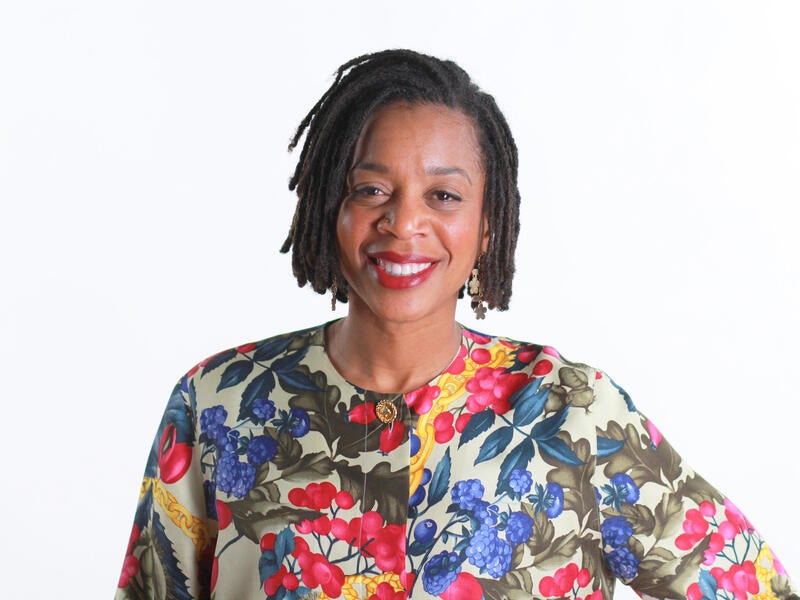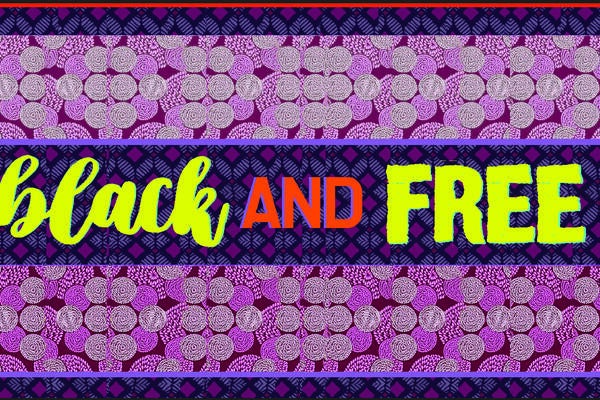
Bringing blackness and freedom to life
Dr. Naila Keleta-Mae’s Black And Free Project is engaging with the public, showcasing Ontario-based Black artists

Dr. Naila Keleta-Mae’s Black And Free Project is engaging with the public, showcasing Ontario-based Black artists
By Claire Francis Faculty of ArtsIn the Canadian academic landscape, scholar, artist, and professor, Dr. Naila Keleta-Mae (Communication Arts) is a visionary. Her Black And Free Project explores Black expressive culture through various mediums — and this year, Keleta-Mae’s work is going beyond academia and being brought to life for the public. A series of events, classes, and exhibits are planned which explore the themes inherent in her multi-year research-creation project on blackness and freedom.
 Keleta-Mae, who was recently named a Canada Research Chair in Race, Gender and Performance, deeply understands the importance of freedom and authenticity in Black expression. Whether it’s access to funding or materials, “Throughout all of Black expressive culture, I'm thinking about the historical, political and cultural context of the art itself, the working conditions that artists need to be able to make art about freedom while feeling free in the artistic process, and how to create moments when different audiences can connect with the art and artists.”
Keleta-Mae, who was recently named a Canada Research Chair in Race, Gender and Performance, deeply understands the importance of freedom and authenticity in Black expression. Whether it’s access to funding or materials, “Throughout all of Black expressive culture, I'm thinking about the historical, political and cultural context of the art itself, the working conditions that artists need to be able to make art about freedom while feeling free in the artistic process, and how to create moments when different audiences can connect with the art and artists.”
Indeed, in the curation of this project, she aims “to contribute to the centuries-old practice of movements for Black liberation, for Black freedom.”
Now, Keleta-Mae is grateful to be able to share details of the public programming. “Black And Free has commissioned 12 Black artists in Ontario to create new works on the topic of blackness and freedom, six of which will be featured in a new series called Black And Free: New Art on Wednesdays from 6:30-8pm on February 1, 8 and 15 and March 1, 8 and 15 at THE MUSEUM, in person and live-streamed with closed captions.” The artists featured during this series are Ken Daley, Beck Derese, Miss Coco Murray, Simone Patricia, Suritah Wignall, and Tafui. In addition, six other artists will be featured at the Ken Seiling Waterloo Region Museum over a two day event on March 25 and 26 called Black And Free: Art Exhibition. Those artists are Lillian Allen, Sydné Barnes-Wright, Damola Disu, Aljumaine Gayle, Emkay Adjei-Manu and Janine Ruhinda.
In fact, the first phase of Black And Free’s programming began in January. On Saturdays in January and February, the Drama School at Young People’s Theatre (YPT) in Toronto is offering Black Theatre in Ontario, a set of five scene-study classes for students in Grades 7 and 8 led by artist-educators Yvonne Addai and Jay Northcott. The partnership with YPT includes work with playwrights Samson Bonkeabantu Brown, Marcia Johnson and Makambe K. Simamba to explore play ideas on blackness and freedom for children and young audiences over the winter and spring.
The Black And Free project has also partnered with YPT and The EDGE (Empower.Develop.Grow.Engage), a Scarborough-based organization committed to uplifting Black youth, on a community residency theatre education program starting in April. And Black and Free comes to the UWaterloo campus in May when it partners with The EDGE on a campus retreat about being a Black post-secondary student.
When asked to highlight specific commissioned artists from the Ontario-wide open call, Keleta-Mae said her preference is to let audiences discover the work for themselves. “There are just so many ways to be and express blackness and freedom.” And she cannot deny the joy of engaging with artists invested in Black expression. “So many of the artists who are now commissioned are artists whose work I was unfamiliar with.”
For Keleta-Mae, the Black and Free Project is a labour of love that reaches back to her own childhood. With its release into the world, ideas which she expressed in poetry as a child and through music as a young adult will be brought to life.
The journey has also been quite labour-intensive. While working with various artists and organizations, Keleta-Mae’s process is collaborative. “It's a partnership… And so it looks like a lot of meetings, a lot of emails,” she says. “We've been working on this for a long time: this is year six of Black And Free for me, and this is year two of the Ontario Research Fund: Research Excellence grant, which is the basis of these partnerships with private, public, and community sector organizations.”
When asked what she wants audiences to gain from engaging with Black And Free’s various works, Keleta-Mae remains open. “You know, I don't want to define it.” The essence of Black And Free, “exceeds measurement, it exceeds quantification,” she continues. “I believe in art and artists’ ability to connect, to articulate, to express, and to inspire. And I believe that if artists, academics, and audiences are thinking about Blackness and Freedom, good will come of it for all of our society. And so I invite people to come to the Black And Free: New Art series and the Black And Free: Art Exhibition and to also please follow us on social media. Ultimately, I trust that Black and Free will impact people in the ways that it needs to.”
For further information on the Black And Free Project, upcoming programming, and the artists, please visit Black And Free on Instagram and Black And Free on Facebook.

Designed by Sahra Soudi and Syrus Marcus Ware for the Black And Free Research-Creation Project.
Read more
Professor dedicates her art, research and teaching to understanding Black freedom

Read more
A poster series celebrates Black university members who made their mark

Read more
Waterloo prioritizing equity and anti-racism and new and future academic offerings
The University of Waterloo acknowledges that much of our work takes place on the traditional territory of the Neutral, Anishinaabeg, and Haudenosaunee peoples. Our main campus is situated on the Haldimand Tract, the land granted to the Six Nations that includes six miles on each side of the Grand River. Our active work toward reconciliation takes place across our campuses through research, learning, teaching, and community building, and is co-ordinated within the Office of Indigenous Relations.